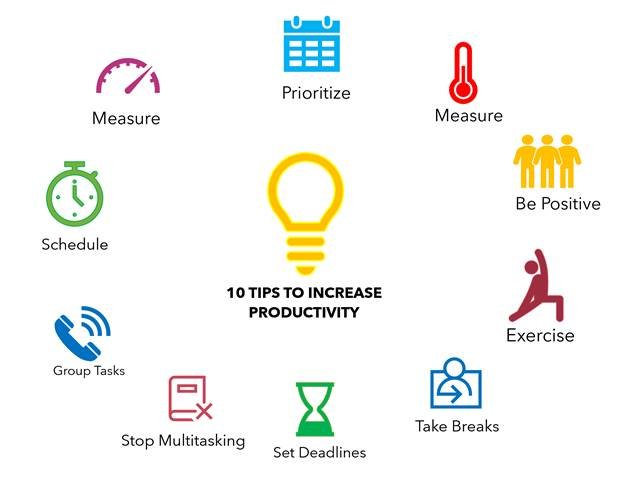
Tips to Maximize Productivity
The Future of Remote Work: Challenges and Strategies for Success
Introduction
Hey there! It’s no secret that the way we work is evolving. More companies are hopping on the remote work train, a trend accelerated by what we all experienced during the pandemic. Remote work brings some real perks—like ditching the long commute and enjoying more flexibility in your schedule. However, it’s not all smooth sailing. There are challenges that can impact how productive people feel, influence their mental health, and affect the overall vibe of a company. Knowing how to navigate these ups and downs is key for anyone looking to thrive in this new world of work. In this piece, we’re diving into what remote work really means, sharing some practical strategies to boost productivity and support mental well-being, and exploring how to keep your company culture alive and well, even from a distance.
The Impact of Remote Work on Productivity
Understanding the Productivity Landscape
Let’s talk about productivity. Remote work can be a game-changer—many folks find they can get more done outside the usual office walls. In fact, surveys reveal that 77% of remote workers feel more productive when working from home. Why is that? Well, skipping the commute and creating a personal workspace that suits you can really help you focus. But it’s important to note that productivity isn’t a one-size-fits-all deal; it varies quite a bit depending on the industry and the role of each employee.
Tips to Maximize Productivity
1. Encourage Time Management: Help your team carve out structured work schedules that play to their strengths and peak productivity times. Everyone’s rhythm is different, and that’s okay!
2. Set Clear Expectations: Make sure your team knows what goals they’re working toward and what their roles entail. This clarity not only reduces confusion but also helps everyone stay focused.
3. Promote Breaks: Don’t just power through the day—encourage regular breaks to help maintain a healthy work-life balance and keep burnout at bay. Studies show that taking short breaks can actually boost your overall productivity.
The Evidence
According to a Gallup report, remote workers often clock in longer hours—averaging an extra 1.4 hours each day. While dedication is great, don’t forget that this can lead to burnout. It’s a smart move to set specific work hours and encourage your team to switch off when the day’s done.
Mental Health Considerations in Remote Work
The Struggle with Mental Health
Remote work can cut out some stressors, like a morning commute, but it also brings new challenges. Many employees find themselves battling feelings of isolation and anxiety due to reduced face-to-face interactions. In fact, research shows that almost 30% of remote workers face mental health struggles tied to this sense of disconnect.
Practical Strategies for Supporting Mental Health
1. Regular Check-Ins: Schedule one-on-one conversations where team members can share what’s on their minds and talk about any stress they’re feeling.
2. Foster Social Connections: Create opportunities for virtual hangouts or casual coffee breaks—these little moments can help build community.
3. Provide Resources: Make sure employees have access to mental health support, whether that’s counseling services or wellness programs.
The Evidence
A study from Buffer found that about 20% of remote workers wrestle with communication and collaboration challenges, which only heightens feelings of isolation. Clearly, strong communication protocols are essential in this setup.
Maintaining Company Culture in a Remote Format
Building Culture When Everyone’s Remote
Nurturing a vibrant company culture when your team is spread out can be tough. In fact, 52% of companies report struggling to keep employees engaged and feeling like they belong.
Key Strategies to Cultivate Company Culture
1. Be Intentional with Communication: Use company meetings, newsletters, or casual huddles to keep everyone in the loop and invite participation.
2. Host Virtual Team Activities: Consider fun team-building exercises, light competitions, or game sessions to foster connections among remote employees.
3. Celebrate Achievements: Recognizing milestones and accomplishments shows appreciation and reminds everyone that they’re an important part of the team’s success.
The Evidence
The move towards hybrid work is becoming a reality, with 70% of organizations looking to blend in-person and remote work. This flexibility might just be the secret to maintaining an engaged workforce and a solid company culture.
How to Apply This Information
Feeling inspired to make some changes? Here’s how you can start:
1. Review Your Current Practices: Take a good look at your existing workflows and pinpoint areas for improvement—especially around communication and mental wellness support.
2. Ask for Feedback: Regularly check in with your team about their remote work experiences. Pay attention to their thoughts on communication, productivity, and well-being.
3. Be Open to Change: Don’t hesitate to tweak remote work policies based on what your team needs. Insights from feedback sessions can be incredibly valuable.
Conclusion
Navigating the remote work landscape isn’t always easy, and it calls for a thoughtful approach that considers both the perks and the challenges. By focusing on productivity, mental health, and company culture, organizations can create a workforce that’s ready to adapt and succeed in this new landscape.
So, where do you go from here? Be proactive, listen to your team’s needs, and take these actionable insights to heart. You’ve got this! I’d love to hear your thoughts and experiences, so don’t hesitate to share what’s worked for you or check out our other resources aimed at helping companies get the most out of their remote work strategies.
Written by Alexander Babinets
Founder of GTA Building.
📍 gtabuilding.com | 📩 info@gtabuilding.com
👤 More about GTA Building → https://www.tiktok.com/@gtabuilding
Hashtags: #remote #work #team #productivity #mental #company #what #their #health #culture #challenges #strategies #they #everyone #communication
